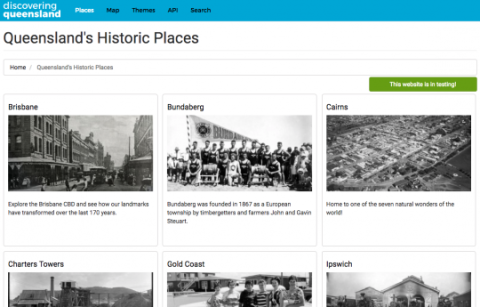
In 2017, Gaia Resources applied to join the Testing Within Government (TWiG program) as part of Advance Queensland, and were successful in our application – leading to the Discovering Queensland project, where we partnered with the Queensland State Archives to “bring the archival collection to life”.
The 12 week project involved setting up a Drupal website, and then undertaking a range of work to enable us to present modern Google Street View photographs to be juxtaposed with the archival photos to show a “now and then” of the photos and give some historical context. This was done to a high degree of spatial accuracy, and the mapping interface becomes an entry point into the archival collection – viewing the photo acts as an anchor to related links in archives and series. Further work on this project is scheduled for late 2017.
You can also read about this project via the blogs below.
- Announcing the project
- Showcasing the project (and how the TWiG project supports businesses)
- Reflections on the project